Discovery | Toward An Inclusive Workplace
WeWork
Discovery | Toward An Inclusive Workplace, creating space for the vulnerable discoveries required to inspire meaningful action on cultivating an ever more inclusive culture.
Authenticity is of utmost importance when trying to create environments of trust and inclusion. How an organization defines and celebrates authenticity is, therefore, central to its progress as a trustworthy and inclusive environment. From my experience, WeWork, the organization is particularly good at celebrating authenticity. In fact, of all of the company's values, it is Authentic that resonates most with me. One factor that separates suitable environments from great ones is the will to improve upon areas that can already be considered a strength. Diversity and inclusion in the workplace in America is an area about which no company can rest on its laurels. Current progress is insufficient, so long as chiefs, heads, and directors of D&I are necessary.
Liz Burow, WeWork's VP of Workplace Strategy, and I designed and facilitated an envisioning session with the We of Color (WoC) employee community group (ECG), as part of an ongoing effort to improve the inclusivity of WeWork's workplace culture. The opportunity to tackle such a central, sensitive theme was both exhilarating and daunting. We approached the envisioning session with three goals;
1. Empower employees to share their perspective in as candid and fulsome a way possible.
2. Equip workshop participants with the tools to create solutions and proposals through their combined experience.
3. Create a prioritized, actionable strategy for improvement, borne out of a co-creative process.
Liz Burow, WeWork's VP of Workplace Strategy, and I designed and facilitated an envisioning session with the We of Color (WoC) employee community group (ECG), as part of an ongoing effort to improve the inclusivity of WeWork's workplace culture. The opportunity to tackle such a central, sensitive theme was both exhilarating and daunting. We approached the envisioning session with three goals;
1. Empower employees to share their perspective in as candid and fulsome a way possible.
2. Equip workshop participants with the tools to create solutions and proposals through their combined experience.
3. Create a prioritized, actionable strategy for improvement, borne out of a co-creative process.



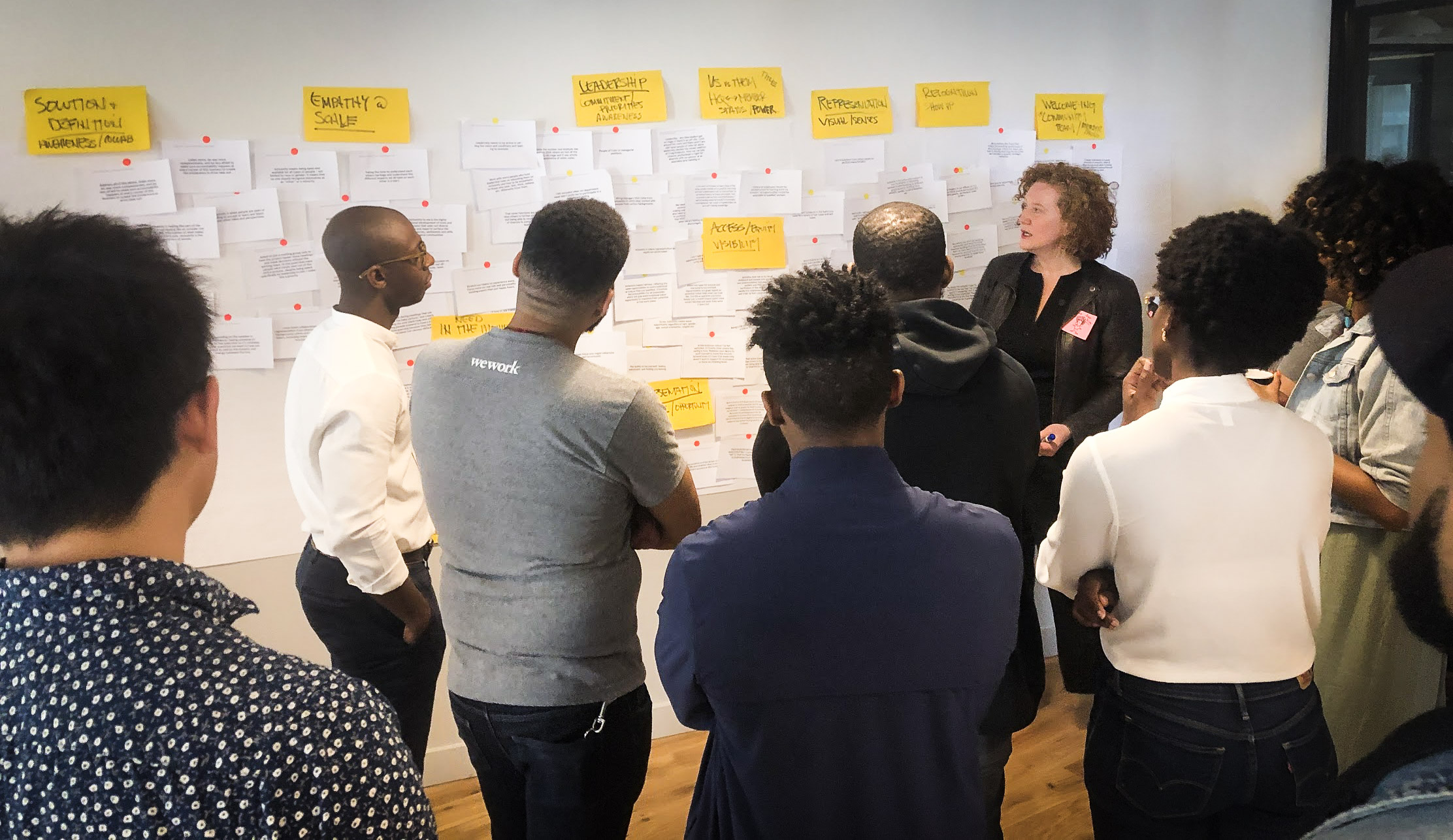

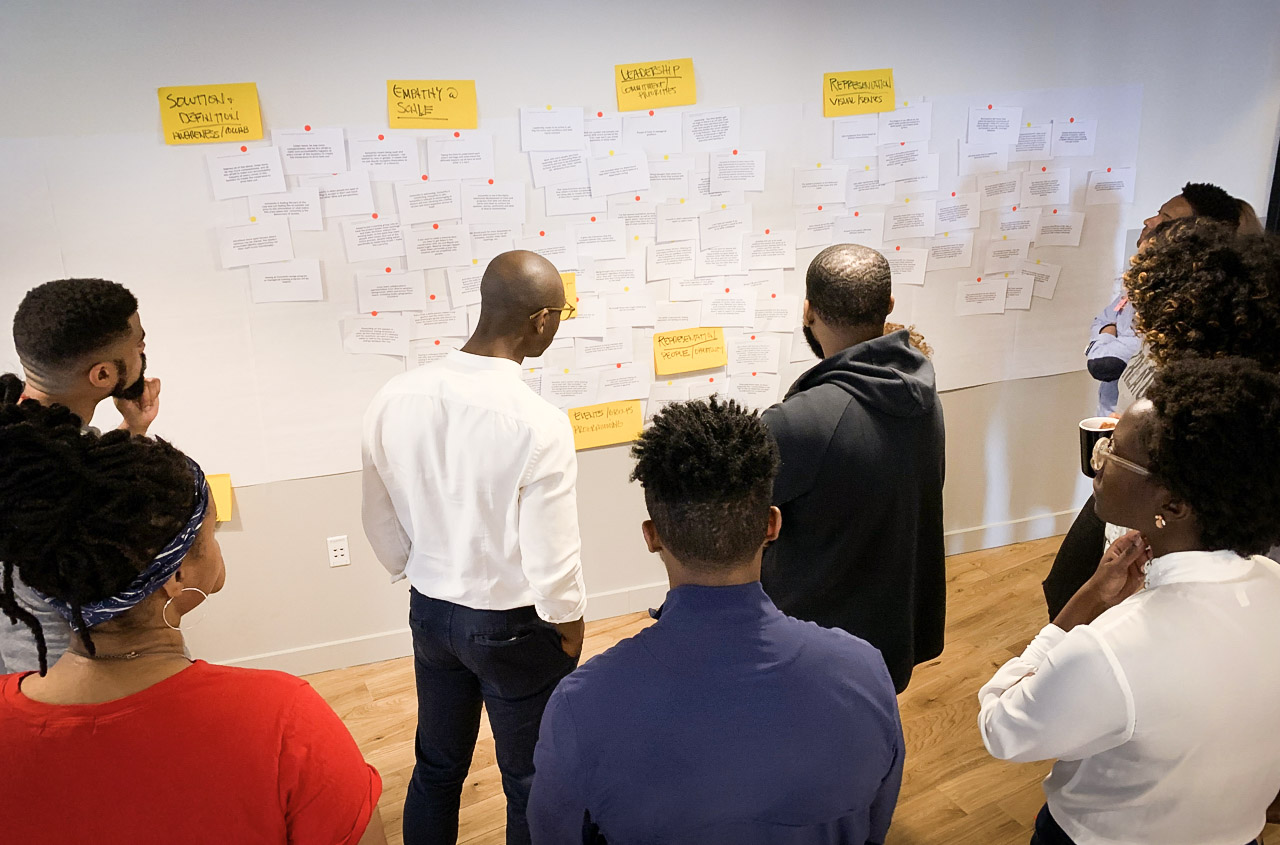

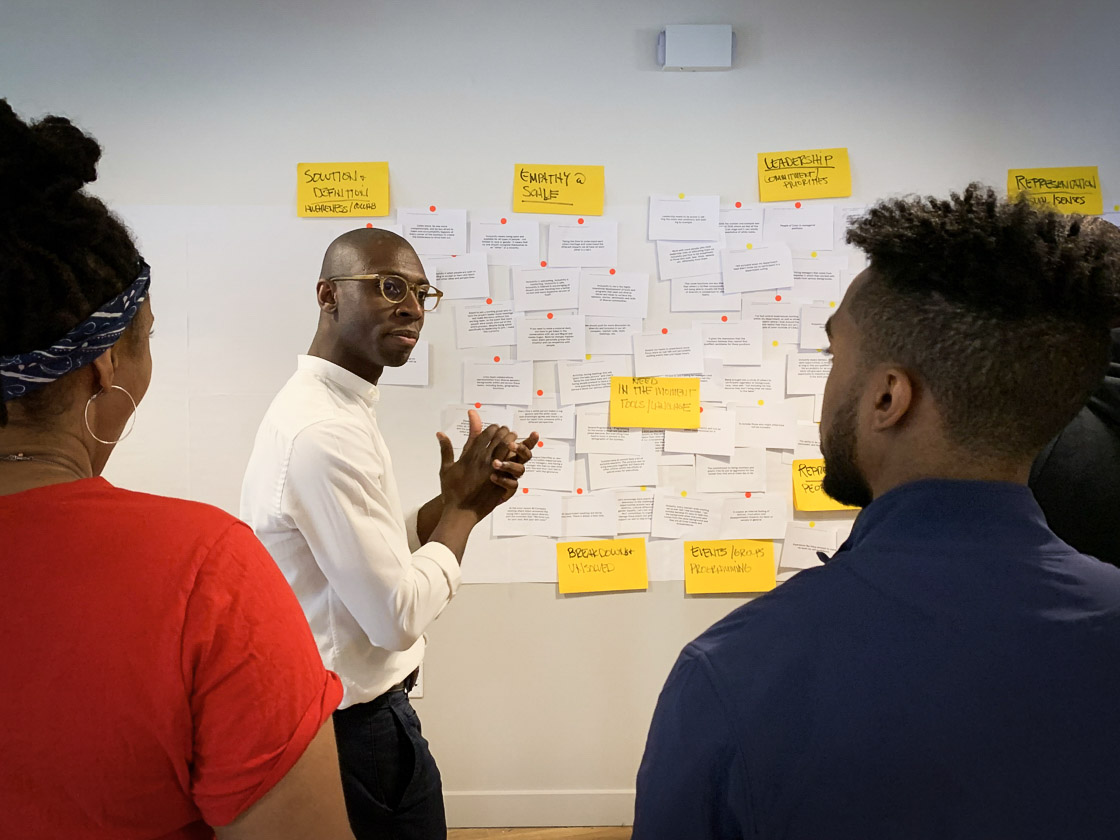
We designed the workshop space to be a physical document. From the moment participants entered the room, they were engaged in the content and canvas of the engagement. We did Affinity Clustering, Creative Matrix, and Impact/Difficulty Matrix exercises, moving from divergent (generative) exercises to convergent (distillation) exercises.
The problem statement guiding the envisioning session was, "how might we create a more inclusive workplace environment?". It is challenging to get people to share poignant experiences and perspectives in group settings. According to our first goal, we designed a short survey that participants completed before the envisioning session; This was part of the envisioning session planning process. The questions solicited open-ended responses about inclusivity, the participant's experiences, and their aspirations for a more inclusive workplace. We needed to get participants thinking, reflecting, and articulating their perspectives in a personal, safe space.
We designed the envisioning session to be a spatial co-creation experience. Survey responses were anonymized, printed, and taped to the panes of glass at the entry to the room, like a gallery exhibit. As participants arrived, greeting one another, they perused the walls and read the responses of their fellow participants; This served as an informal preamble to the deliberate exercise of establishing a common language of experience, which the group would draw from to brainstorm solutions.
We designed the envisioning session to be a spatial co-creation experience. Survey responses were anonymized, printed, and taped to the panes of glass at the entry to the room, like a gallery exhibit. As participants arrived, greeting one another, they perused the walls and read the responses of their fellow participants; This served as an informal preamble to the deliberate exercise of establishing a common language of experience, which the group would draw from to brainstorm solutions.
None of the envisioning session participants had prior exposure to Design Thinking methods. Nonetheless, they would all use Design Thinking tools to tackle the daunting problem statement we addressed. The session began with large empty walls, groups of tables covered with blank exercise templates, and colored Post-It notes and sharpies at each activity station.
Participants used cards with the survey responses to form clusters based on their affinity to one another. From one card on the wall to nearly one hundred, themes began to emerge that were then adapted to "how might we..." questions. We then used the points that materialized in an ideation exercise where participants cross-referenced the "how might we..." items against the categories of environment (space), behaviors, culture, and purpose. The results were a high-volume set of wide-ranging ideas. The ideas that showed the most promise for lasting impact were carried forward to a prioritization exercise, rounding out the envisioning session.
Participants used cards with the survey responses to form clusters based on their affinity to one another. From one card on the wall to nearly one hundred, themes began to emerge that were then adapted to "how might we..." questions. We then used the points that materialized in an ideation exercise where participants cross-referenced the "how might we..." items against the categories of environment (space), behaviors, culture, and purpose. The results were a high-volume set of wide-ranging ideas. The ideas that showed the most promise for lasting impact were carried forward to a prioritization exercise, rounding out the envisioning session.
Participant Reflections
“I felt recognized, like my voice at the company was being heard.”
- It was great to engage with Miguel in a space like this and him speak
so authentically to us. We got to see him in a different light and really
appreciated him opening up to us.
- Miguel's presence let us know that someone in executive leadership
actually cares about us and issues of diversity at the company.
-
It was great to spend a day tackling these issues together. This workshop reinforces my passion for working here.
- It means so much to work alongside people who are truly invested in creating an inclusive environment for all.
- This was truly enlightening and I feel like change will actually be underway.
- Excited to work on our suggested solutions!
- The graphs were powerful in helping us to uncover what changes we can begin to make today and what's important to everyone collectively. I hope we get to receive copies of them so they stay top of mind!
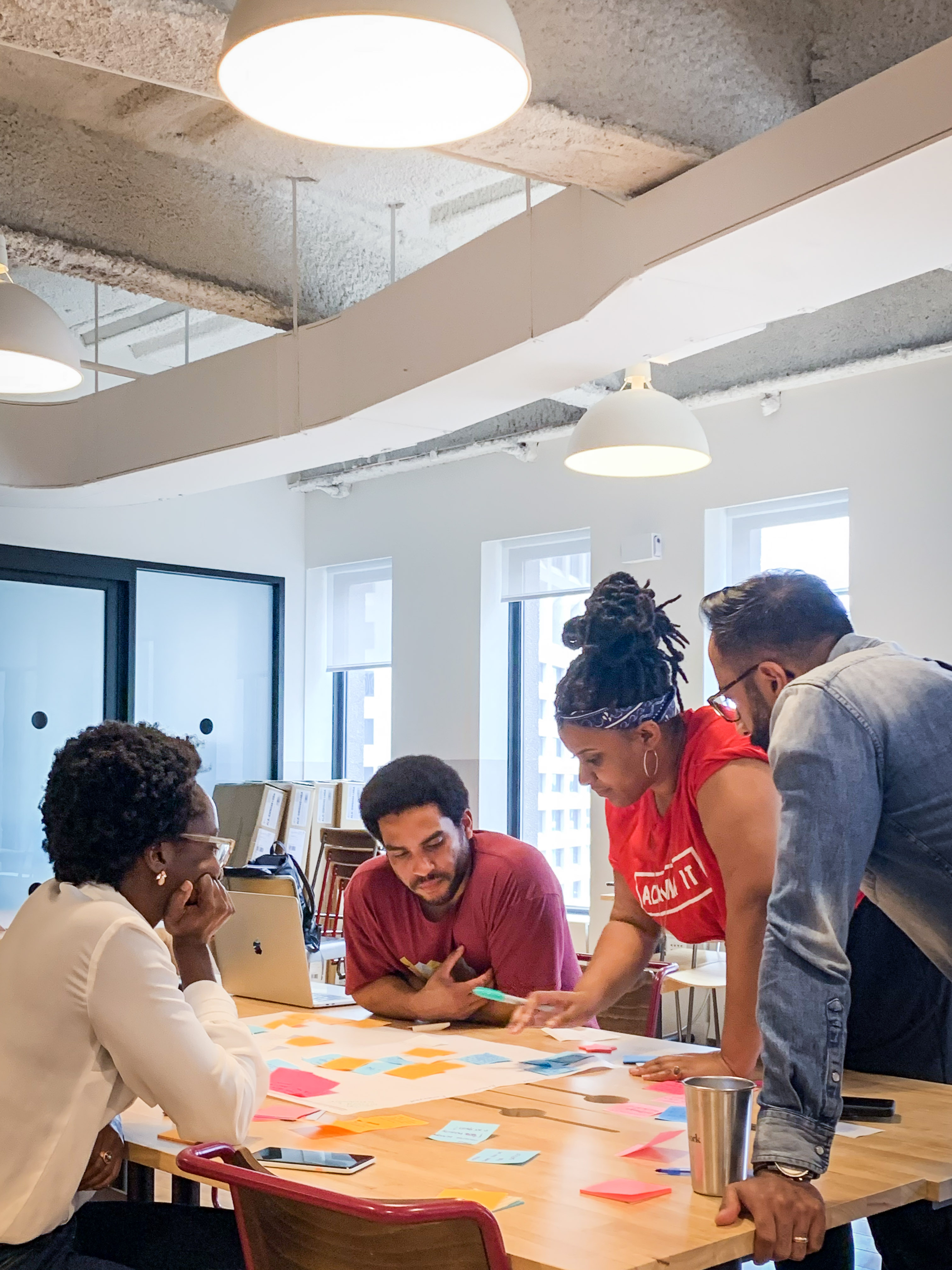
To conclude, I walked company executives who joined the end of the session through what was in effect the envisioning session gallery. The walls and templates were no longer bare but full of text and colorful Post-It notes hosting innovative proposals. We were able to walk newcomers through a brief yet profound story of experience, emergent themes, a responsive idea generation framework, and lastly, a prioritized matrix to chart further action, due to the physical nature of the session's content.
Liz and I synthesized the findings from the envisioning session, creating an executive summary and detailed documentation of the envisioning session's activities. We presented them back to the participants and executive sponsors. Those groups would then carry the work forward in pursuit of an ever more inclusive workplace.
The envisioning session we ran would become a model, adapted and used to advance similar discussions with other WeWork ECG's, like Women of We, among others.
Liz and I synthesized the findings from the envisioning session, creating an executive summary and detailed documentation of the envisioning session's activities. We presented them back to the participants and executive sponsors. Those groups would then carry the work forward in pursuit of an ever more inclusive workplace.
The envisioning session we ran would become a model, adapted and used to advance similar discussions with other WeWork ECG's, like Women of We, among others.
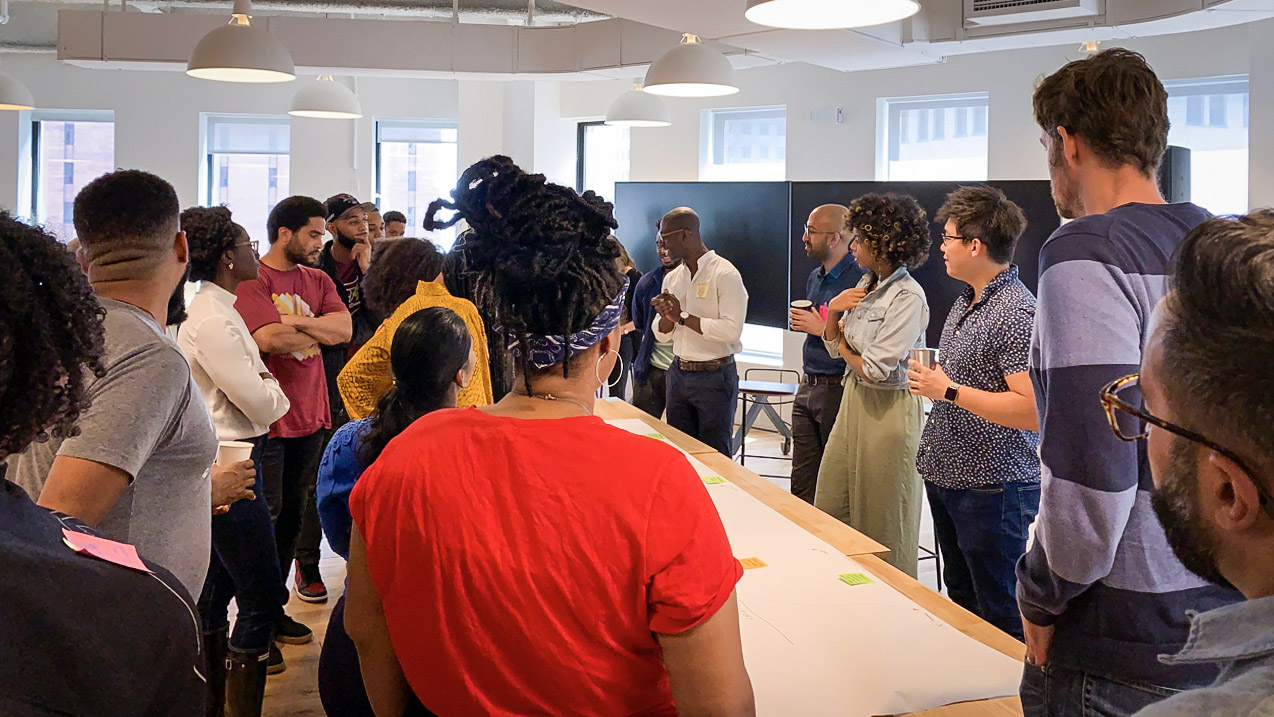
Notes about my role
I served as a design strategist and lead facilitator for this very sensitive undertaking. Working with the Vice President of Workplace Strategy, Liz Burow, at WeWork, we collaborated to develop the initial proposal, workshop framework, communications, and synthesis for the workshop.
I was responsible for developing the pre-workshop survey and its administration. Subsequently, I was responsible for processing survey responses to guide the refinement of workshop activities. After the workshop, both Liz and I worked together to synthesize the findings from the engagement into a summary document later shared with executives and workshop participants.
I served as a design strategist and lead facilitator for this very sensitive undertaking. Working with the Vice President of Workplace Strategy, Liz Burow, at WeWork, we collaborated to develop the initial proposal, workshop framework, communications, and synthesis for the workshop.
I was responsible for developing the pre-workshop survey and its administration. Subsequently, I was responsible for processing survey responses to guide the refinement of workshop activities. After the workshop, both Liz and I worked together to synthesize the findings from the engagement into a summary document later shared with executives and workshop participants.
Client
WeWork
Typology
Organizational Design, Design Thinking Workshops,
Location
New York, NY
Size
N/A
Timeline
2018
Status
Complete
Program
Workshop design, facilitation, planning, survey design, synthesis and documentation.
WeWork
Typology
Organizational Design, Design Thinking Workshops,
Location
New York, NY
Size
N/A
Timeline
2018
Status
Complete
Program
Workshop design, facilitation, planning, survey design, synthesis and documentation.
Michael Caton, RA, AIA, LEED AP BD+C, CDTP